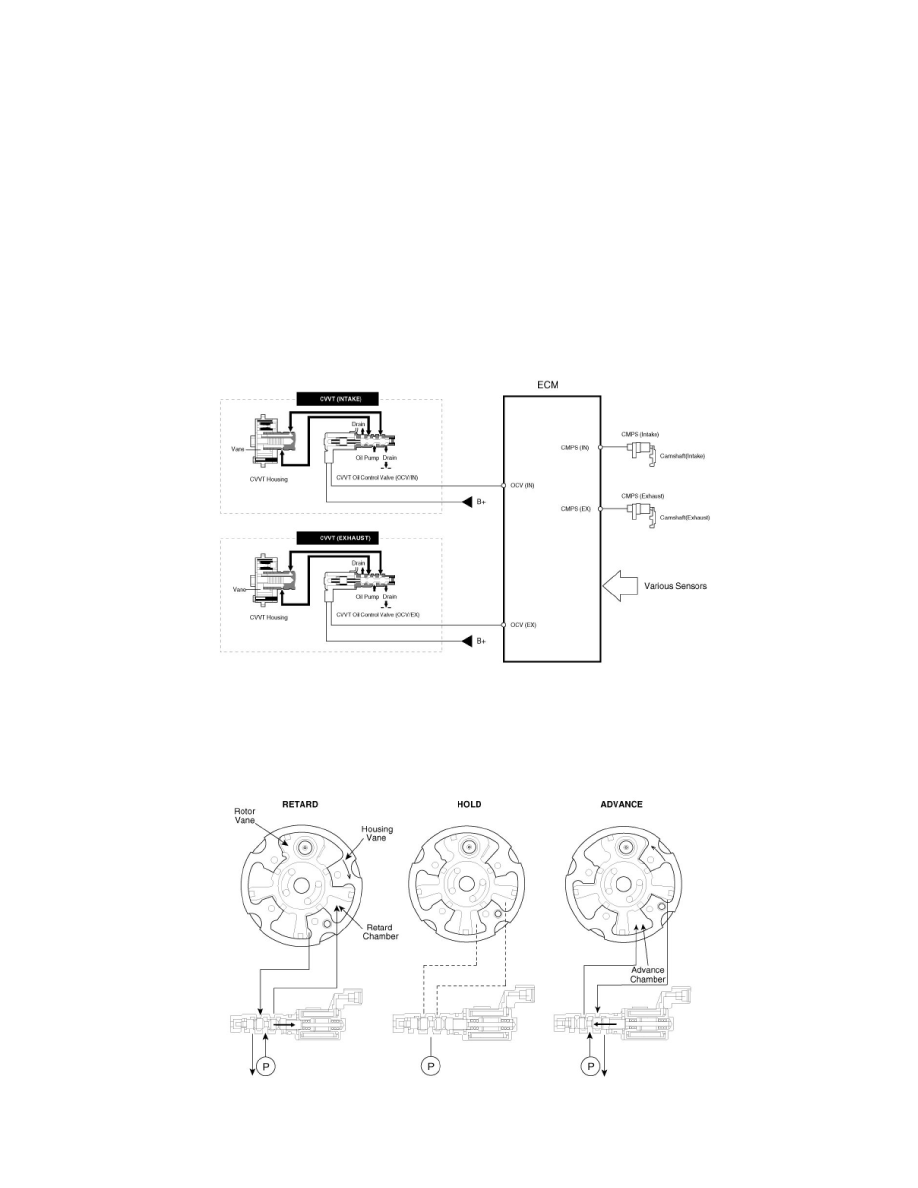Borrego 4WD V6-3.8L (2009)

Variable Valve Timing Actuator: Description and Operation
CVVT (Continuously Variable Valve Timing) System
Description
Continuous Variable Valve Timing (CVVT) system advances or retards the valve timing of the intake and exhaust valve in accordance with the ECM
control signal which is calculated by the engine speed and load.
By controlling CVVT, the valve over-lap or under-lap occurs, which makes better fuel economy and reduces exhaust gases (NOx, HC). CVVT improves
engine performance through reduction of pump loss, internal EGR effect, improvement of combustion stability, improvement of volumetric efficiency,
and increase of expansion work.
This system consists of
-
the CVVT Oil Control Valve (OCV) which supplies the engine oil to the cam phaser or runs out the engine oil from the cam phaser in accordance
with the ECM PWM (Pulse With Modulation) control signal,
-
the CVVT Oil Temperature Sensor (OTS) which measures the engine oil temperature,
-
and the Cam Phaser which varies the cam phase by using the hydraulic force of the engine oil.
The engine oil flowing through the CVVT oil control valve varies the cam phase in the direction (Intake Advance/Exhaust Retard) or opposite direction
(Intake Retard/Exhaust Advance) of the engine rotation by rotating the rotor connected with the camshaft inside the cam phaser.
Operation Principle
The CVVT has the mechanism rotating the rotor vane with hydraulic force generated by the engine oil supplied to the advance or retard chamber in
accordance with the CVVT oil control valve control.
[CVVT System Mode]
